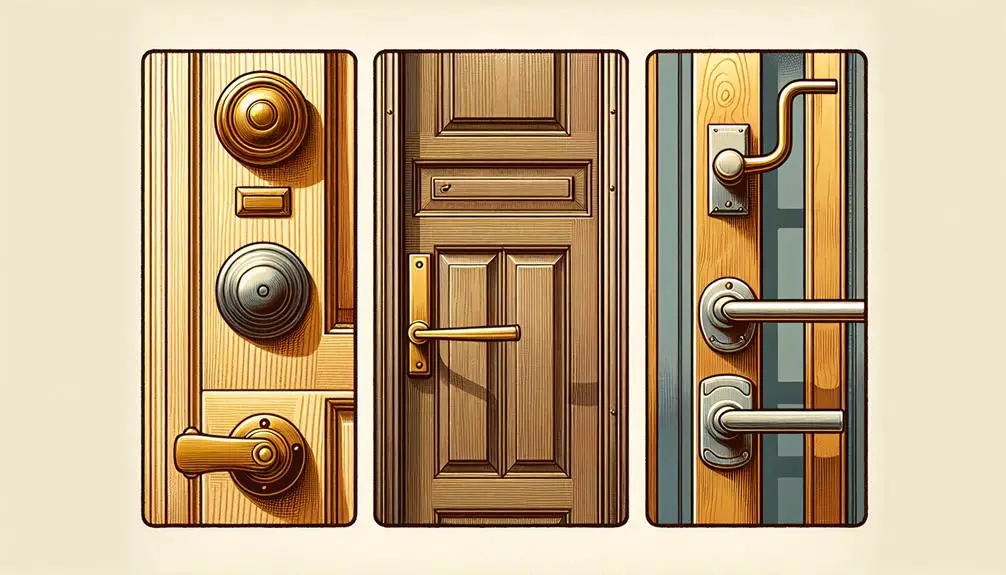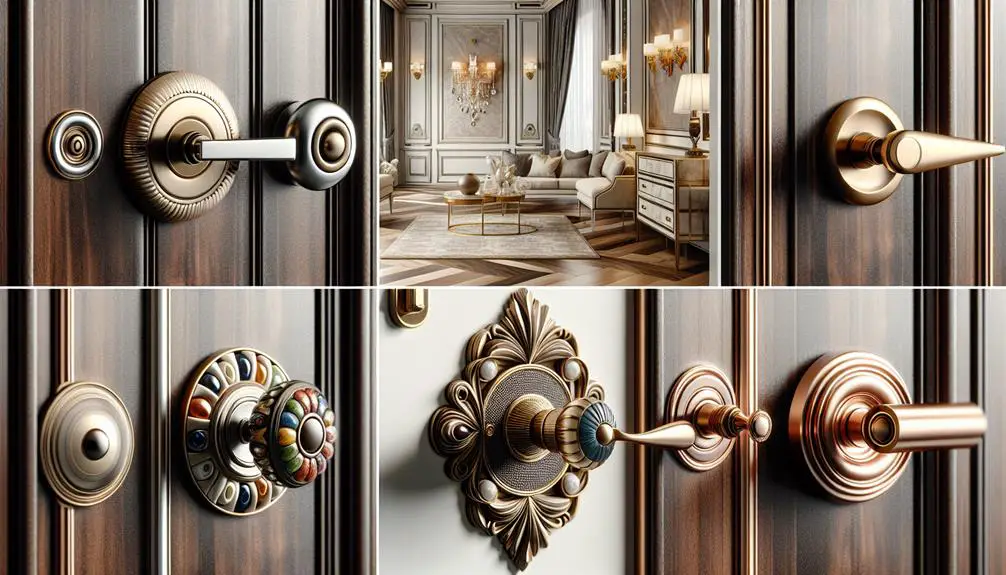- Understanding different types of door handles is crucial as they can vary in function and style. Lever handles are common in residential settings, while knob handles are often found in commercial buildings.
- Correct gripping and turning techniques ensure smooth operation of the door handle. Gripping the handle firmly but not too tightly allows for easy turning without straining your wrist.
- Familiarizing yourself with the locking mechanisms of the door handle is essential for security. Some handles have a simple twist lock, while others may require a key or code to unlock.
- Regular maintenance of door handles, such as lubricating hinges and cleaning the handle surface, can prolong their lifespan and ensure proper functionality.
- Design considerations, such as the material, finish, and style of the door handle, can enhance the overall look of a room and complement the decor.
Understanding Door Handle Types

Before you pick a door handle, it's crucial to understand the different types available, each designed for specific functionality and aesthetic appeal. The installation process and historical significance of each type add layers to your decision-making.
Lever handles, characterized by their horizontal handle that you push down to open the door, are convenient and accessible, making them ideal for high-traffic areas. Their installation involves aligning the spindle with the door's latch mechanism—a straightforward process that guarantees a secure fit. Historically, lever handles have evolved from simple wooden levers to ornate designs signifying status and sophistication.
Knob handles, on the other hand, require a twisting motion to operate. Their installation is slightly more complex, involving precise drilling to accommodate the knob mechanism. Knob handles have a rich historical significance, with early forms dating back to the 17th century, reflecting the period's craftsmanship and materials.
Pull handles offer a different approach, typically used on doors that don't require latching. The installation process for pull handles is simpler, focusing on secure mounting to handle heavy usage. Historically, pull handles were functional elements on large gates and doors, often crafted from wrought iron for durability and aesthetic appeal.
Proper Grip and Motion
To open a door correctly, you'll need to grasp the handle firmly and execute the appropriate motion depending on its type. The key here is balancing hand strength with the ergonomic design of the handle. It's not just about applying force; it's about how you apply it.
For lever handles, your grip should be assertive yet gentle, encircling the lever in a way that your thumb and fingers meet on the other side. The motion is a downward push, utilizing the natural weight of your arm to assist in the action without exerting excessive force.
For round knobs, the technique shifts slightly. Here, hand strength plays a more significant role. You'll need to grip the knob with your hand, ensuring your fingers are evenly spaced for a balanced push or pull. The motion is more of a twisting one, turning the knob clockwise or counterclockwise depending on the door's mechanism.
Locking and Unlocking Techniques
Once you've mastered the grip and motion needed to operate a door handle, it's important to learn the proper techniques for locking and opening the mechanism efficiently. Understanding the locking mechanism is important for your security and convenience. Typically, door handles come with either a push-button lock on the knob itself or a deadbolt that requires a key.
For push-button locks, make sure the door is fully closed before pressing the button found on the interior handle. This action secures the latch, preventing the door from being opened from the outside. To open, simply turn the interior handle. This motion releases the lock automatically.
When dealing with key-operated locks, key management becomes important. Always check the key's orientation before inserting it into the lock. A gentle turn clockwise usually locks the door, while a counter-clockwise turn opens it. Be mindful not to force the key, as this could damage the lock.
Security implications should never be underestimated. Regularly check that your keys are in good condition and that locks function smoothly. Mismanaging keys or neglecting the health of your locks can compromise your home's security.
Maintenance and Troubleshooting
Regular maintenance is key to ensuring your door handles and locks operate smoothly and remain reliable over time. Establishing consistent cleaning routines prevents the buildup of grime and dust that can impair functionality. You'll want to use a mild soap and water solution for most materials, but make sure you're checking the manufacturer's recommendations to avoid damage. A soft cloth is best for wiping surfaces without scratching.
Lubricating the moving parts of the handle and lock mechanism is another important step. Use a graphite lubricant for internal components, as it won't attract dirt like oil-based products. Apply sparingly to avoid buildup.
Over time, you may encounter issues such as a loose handle or difficulty in turning the lock. This often signals the need for tightening screws or replacing worn-out parts. Keeping a small set of tools handy for these adjustments can save you time and hassle. If parts are beyond simple tightening, you'll need to identify and obtain the appropriate replacement parts. Always match the specifications of the original parts to ensure compatibility.
Style and Aesthetic Choices

Selecting the right door handle involves more than just functionality; it's about choosing a style and finish that complements your home's aesthetic. When you're going through the vast options, consider these elements:
- Color Coordination: The color of your door handle should harmonize with the door color and the room's general color scheme. For instance, a sleek black handle can offer a striking contrast on a white door, while a brass handle might complement warmer tones. Paying attention to color coordination makes sure that the handle doesn't just blend in but improves the door's visual appeal.
- Material Contrast: Mixing materials can add depth and interest to your space. If your room features a lot of wood, a metal door handle can provide a pleasing contrast. Conversely, if you're working with a more industrial theme, a wooden handle might soften the look. The key is to balance contrast without clashing.
- Design Complexity: The design of the handle itself can range from minimalist to ornate. Your choice should reflect the style of your home. A modern, minimalist home benefits from simple, clean lines, while a more traditional setting might call for intricate designs.
Conclusion
Congratulations, you've now mastered the basics of door handle operation. From recognizing different types and employing the right grip and motion, to locking and opening with ease.
Don't forget, regular maintenance is key to ensuring your door handles function smoothly and last longer.
And while practicality reigns supreme, choosing a style that complements your space can add that perfect finishing touch.
Armed with this knowledge, you're well-equipped to handle any door with confidence and finesse.